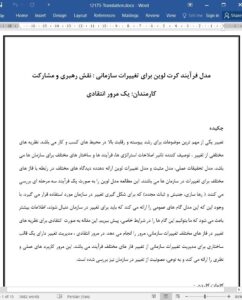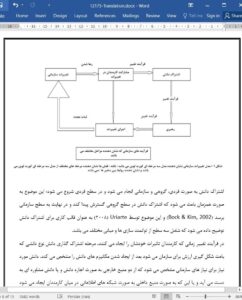Abstract
Change is crucial for organizations in growing, highly competitive business environments. Theories of change describe the effectiveness with which organizations are able to modify their strategies, processes, and structures. The action research model, the positive model, and Lewin's change model indicate the stages of organizational change. This study examined the three stages of Lewin's model: unfreezing, movement, and refreezing. Although this model establishes general steps, additional information must be considered to adapt these steps to specific situations. This article presents a critical review of change theories for different stages of organizational change. In this critical review, change management offers a constructive framework for managing organizational change throughout different stages of the process. This review has theoretical and practical implications, which are discussed in this article. Immunity to change is also discussed.
Introduction and research questions
The purpose of the study is to craft the relation between process model and change, this relation describes the ways of implementing change process by leader’s knowledge sharing, and this sharing identifies the stages of change process, and these stages delineate the functional significance between organizational change and change implementation. The organizational life has been made inevitable feature by global, technological and economic pace, and many models of organizational change have acknowledged the influence of implicit dimensions at one stage or more stages of organizational change process (Burke, 2008; Wilkins & Dyer, 1988), and these models imitate different granular levels affecting the process of organizational change, and each level of them identifies distinctive change implementation stages (By, 2005). A model of organizational change in Kurt Lewin’s three steps change process context was introduced in this study; which reflects momentous stages in change implementation process. Kurt Lewin’s model is the early fundamental planned change models explaining the striving forces to maintain the status quo and pushing for change (Lewin, 1947). To change the “quasistationary equilibrium” stage, one may increase the striving forces for change, or decrease the forces maintaining the status quo, or the combination of both forces for proactive and reactive organizational change through knowledge sharing of individual willingness with the help of stimulating change leadership style.











